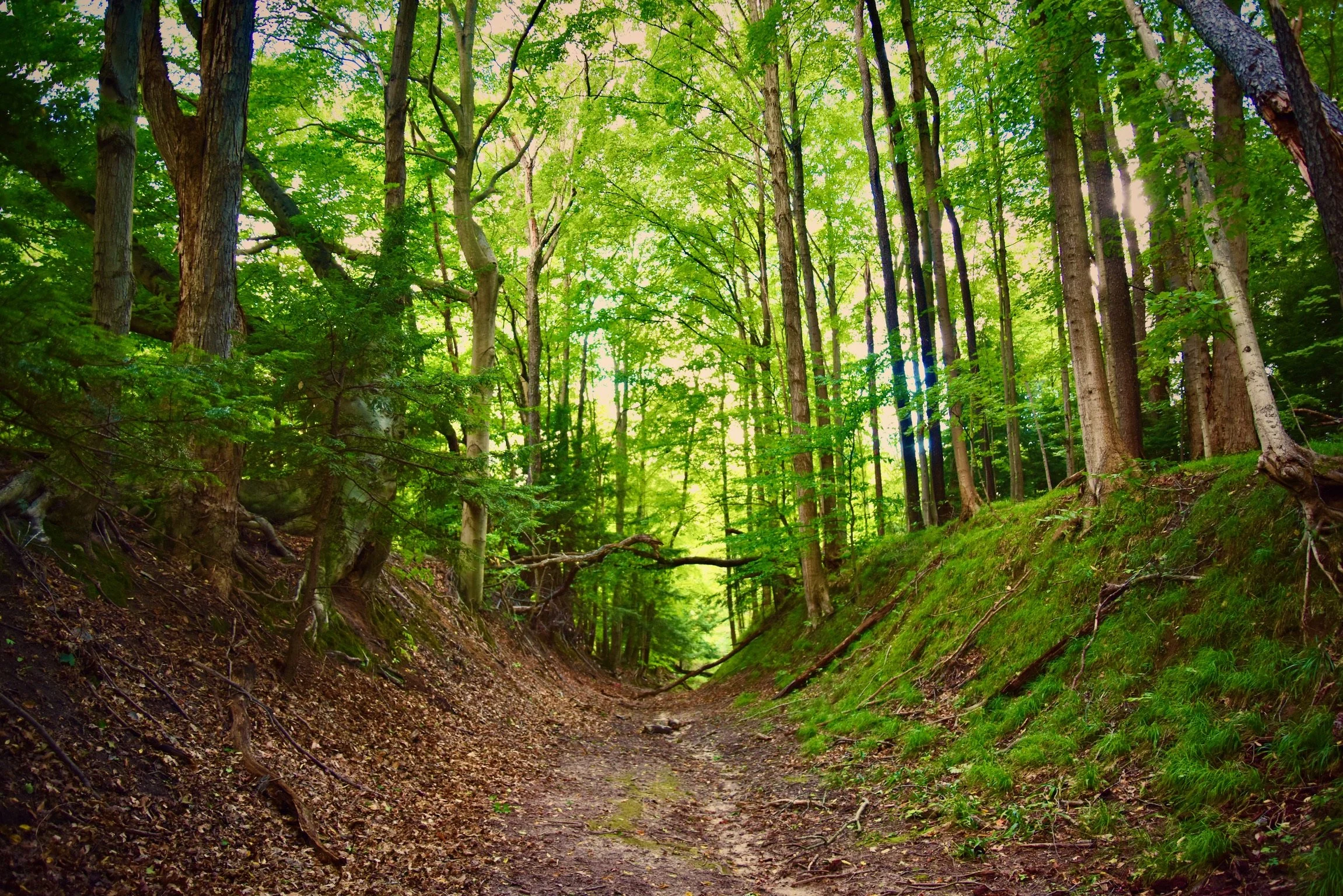Why are most plants green? Because they contain chlorophyll pigments, which are used to absorb energy from sunlight. Many of us have learned about photosynthesis, the process plants use to synthesize foods from sunlight, carbon dioxide, and water. This dependence on sunlight is what drives plants to grow upward and trees to reach over one another, fighting for the best spot in the sun. But in the dark, shaded understory of the forest, not much sunlight reaches the forest floor. Some of the plants that live in these darkened locations have found a way to obtain energy without sunlight. In Michigan forests, we have a haunting example of these adaptations found in Monotropa uniflora. The abnormal white color of this plant and the fact that it is usually found in the darkest corners of a forest understory, have led people to nickname the plant ghost plant, corpse plant, or Indian pipes.
Mostly white with specks of black, this forest oddity produces a single, nodding, bell-shaped
flower head atop a scaly stem. Indian pipes are actually a relative of the common blueberry, which has a similarly shaped bloom. The plant occasionally develops a pink coloration as the season progresses, and rare varieties even have a deep red color. If searching for this elusive specimen, look in the understory of dark woods often around beech trees. Indian pipes require moist, thick leaf cover typically found in mature forests. Most of the year, this plant is unseen, living underground and only appearing to bloom for a couple months in the summer. Without the need for sunlight, the only reason Indian pipes poke their heads above the soil is to be pollinated by long-tongued bees. Once pollinated, the flowers heads turn upright, forming a seed capsule. The seeds are then distributed through the forest by wind.
Beyond its ghostly appearance, what makes Indian pipes so interesting is that these plants do not
seek an energy source from above, but rather from below the ground. Without a strong source of
sunlight on the forest floor, chlorophyll and photosynthesis are ineffective. Instead, this plant
adapted a parasitic relationship with mycorrhizal fungi found on tree roots. The fungi is
already in symbiosis with the tree roots, acting like a “middleman” connecting the photosynthesizing tree with the Indian pipes. Scientists believe this relationship does not cause harm to the tree. This unique adaptation to obtain energy without harvesting solar energy is uncommon, but Indian pipes are one of about 3,000 non-photosynthetic plants in the world.
As with all wildflowers, we do not recommend picking Indian pipes. Not only will the flower quickly wilt and turn black, but native wildflowers should be preserved as part of the ecosystem and to spark the interest of the next passerby. That said, make sure to bring your camera to take pictures of this photogenic ghost plant.
Indian pipes are said to be the favorite flower of American poet Emily Dickinson, and the flower
was even featured on the cover of her first published book of poetry. She makes frequent reference to the whiteness of the flowers in her writings. Dickinson’s friend and editor Mabel Todd once painted a picture of Indian pipes for Emily, and she responded, “That without suspecting it you should send me the preferred flower of life, seems almost supernatural, and the sweet glee that I felt at meeting it, I could confide to none.”









